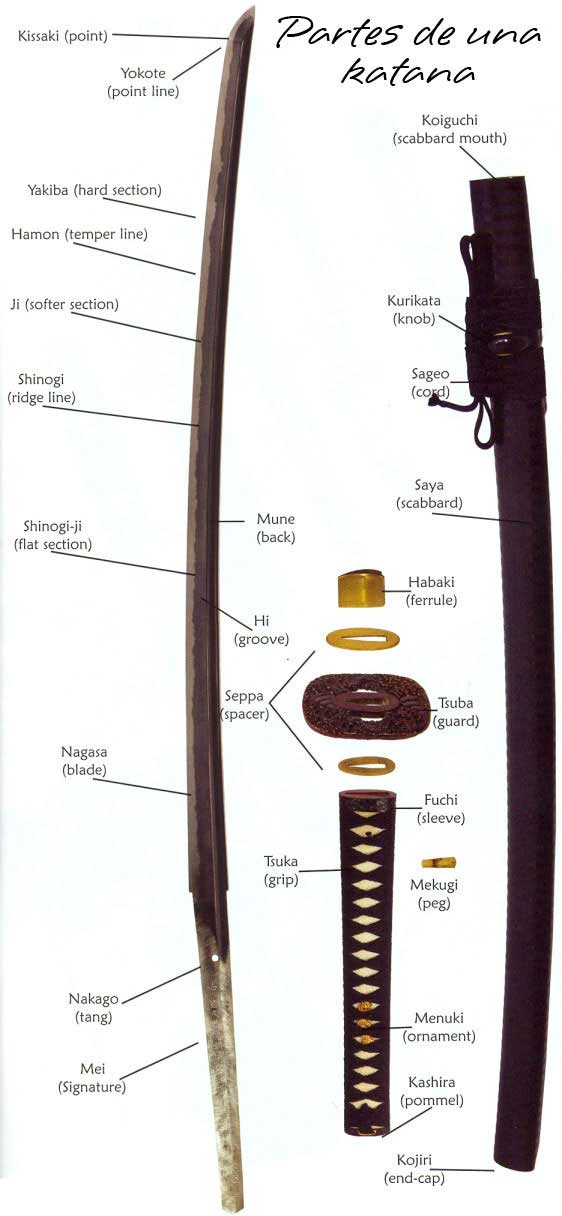What is the Yokote?
The yokote is one of the most distinctive and functional features of the katana, the emblematic Japanese sword. This perfectly delineated line separates the blade of the katana from the sharp tip known as kissaki. It is essential to understand that the yokote not only contributes to the aesthetic design of the blade but also has significant implications for the performance and technique of handling the katana.
There are various shapes and angles of yokote, which vary depending on the type of katana and its specific use. Some yokotes are straight, providing a smooth transition between the blade and the tip, while others may be curved and more complex, with transitions that add to the visual richness of the weapon. The angle of the yokote can range from an almost straight cut to a pronounced one, and this variation is designed to optimize performance in combat or in specific cutting techniques.
An essential part of the functionality of the yokote is that it determines the most resistant area of the katana's blade. Just below the yokote is the strongest section of the sword, which is crucial for delivering powerful and effective cuts, as well as for blocking attacks efficiently. In this sense, the yokote also serves as a guide for executing precise cuts, allowing the practitioner to use the sword more effectively and improving the depth and accuracy of each movement.

The importance of the yokote also extends beyond its practical functionality. Often, the yokote includes decorative elements that can reflect the culture, history, and lineage of the owner. This can range from simple marks to intricate designs that tell stories and symbolize the warrior's heritage. This aesthetic component adds significant emotional and cultural value to the katana.
The maintenance of the yokote is essential to preserve not only its functionality but also the integrity of the katana as a whole. To ensure the durability and effectiveness of the yokote, it is vital to keep it clean and lubricated. This helps to prevent phenomena such as oxidation and corrosion, which can compromise both the effectiveness of the sword and its aesthetic appearance. Additionally, care must be taken to avoid hits or damages that may alter the shape or design of the yokote, as this can negatively affect the performance of the katana in use.
















